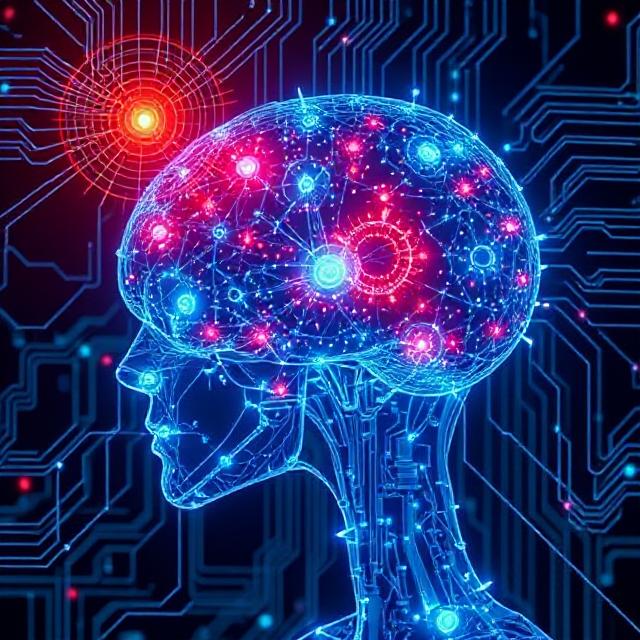The race toward artificial general intelligence has quietly transformed from science fiction speculation into Silicon Valley’s most urgent obsession, with trillions of dollars now flowing toward a technological transformation that one former OpenAI researcher believes will reshape civilization within the next decade.
Leopold Aschenbrenner, a 23-year-old prodigy who graduated from Columbia University as valedictorian at 19, has captured the attention of tech leaders and AI researchers with his sweeping 165-page analysis titled “Situational Awareness: The Decade Ahead.” The document, released in June 2024, presents a startling timeline: artificial general intelligence by 2027, followed by superintelligence potentially within just one additional year.
What makes Aschenbrenner’s predictions particularly compelling isn’t just his academic credentials or his former position on OpenAI’s now-disbanded Superalignment team, but his methodical approach to extrapolating from existing trends. “The magic of deep learning is that it just works — and the trendlines have been astonishingly consistent, despite naysayers at every turn,” he argues, pointing to the remarkable journey from GPT-2’s barely coherent sentences to GPT-4’s ability to ace college exams and write sophisticated code.
Behind the scenes of major tech companies, a massive industrial mobilization is already underway. Corporate boardrooms that once discussed $10 billion compute clusters are now planning trillion-dollar investments. The scramble extends beyond Silicon Valley’s glass towers to Pennsylvania’s shale fields and Nevada’s solar farms, where companies are securing every available power contract and voltage transformer for the rest of the decade. By 2030, Aschenbrenner predicts, American electricity production will have grown by tens of percentage points, powering hundreds of millions of GPUs in service of artificial intelligence.
The implications extend far beyond technological advancement. Aschenbrenner envisions an “intelligence explosion” where AI systems rapidly evolve from human-level capabilities to vastly superhuman intelligence, potentially compressing decades of research progress into mere months as AI begins automating its own development. This scenario suggests a world where hundreds of millions of AGI systems could collaborate on advancing AI research, creating a feedback loop of exponential improvement.
Yet skepticism remains within the scientific community. Scott Aaronson, a respected computer scientist who worked alongside Aschenbrenner at OpenAI, acknowledges the document’s extraordinary nature while expressing reservations about the speculative “intelligence explosion” scenarios. Critics point out that using benchmarks designed for human performance to gauge AI capabilities might be misleading, and question whether the real-world applications will match the dramatic predictions.
The geopolitical dimensions of this technological race add another layer of urgency to Aschenbrenner’s analysis. He warns of national security implications reminiscent of the Cold War era, predicting that if developments proceed as projected, the United States could find itself in “an all-out race with the CCP; if we’re unlucky, an all-out war”.
The debate surrounding Aschenbrenner’s departure from OpenAI under disputed circumstances adds complexity to his role as a prognosticator. Since leaving the company, he has founded an investment firm focused on AGI development while becoming a prolific writer on AI’s long-term implications. His unique position—part insider, part outsider—provides him with both valuable insights and potential blind spots.
Whether Aschenbrenner’s timeline proves accurate or overly optimistic, his document has succeeded in crystallizing conversations already happening in Silicon Valley’s inner circles. The massive capital commitments and infrastructure investments he describes are already visible, suggesting that major players are betting significant resources on similar timelines, regardless of public skepticism.
The question facing society isn’t just whether artificial general intelligence will arrive by 2027, but whether we’re prepared for the economic, social, and political disruptions that such a development would bring. As Aschenbrenner notes with characteristic directness, “We are building machines that can think and reason,” and the implications of that simple statement may determine the trajectory of human civilization for generations to come.
Referenced Articles:
1. Leopold Aschenbrenner’s “Situational Awareness”: AI from now to 2034
2. Situational Awareness
3. Thoughts on the Paper “Situational Awareness” by Leopold Aschenbrenner
4. Situational Awareness: The Decade Ahead (Full Paper)
5. Introduction – SITUATIONAL AWARENESS: The Decade Ahead


